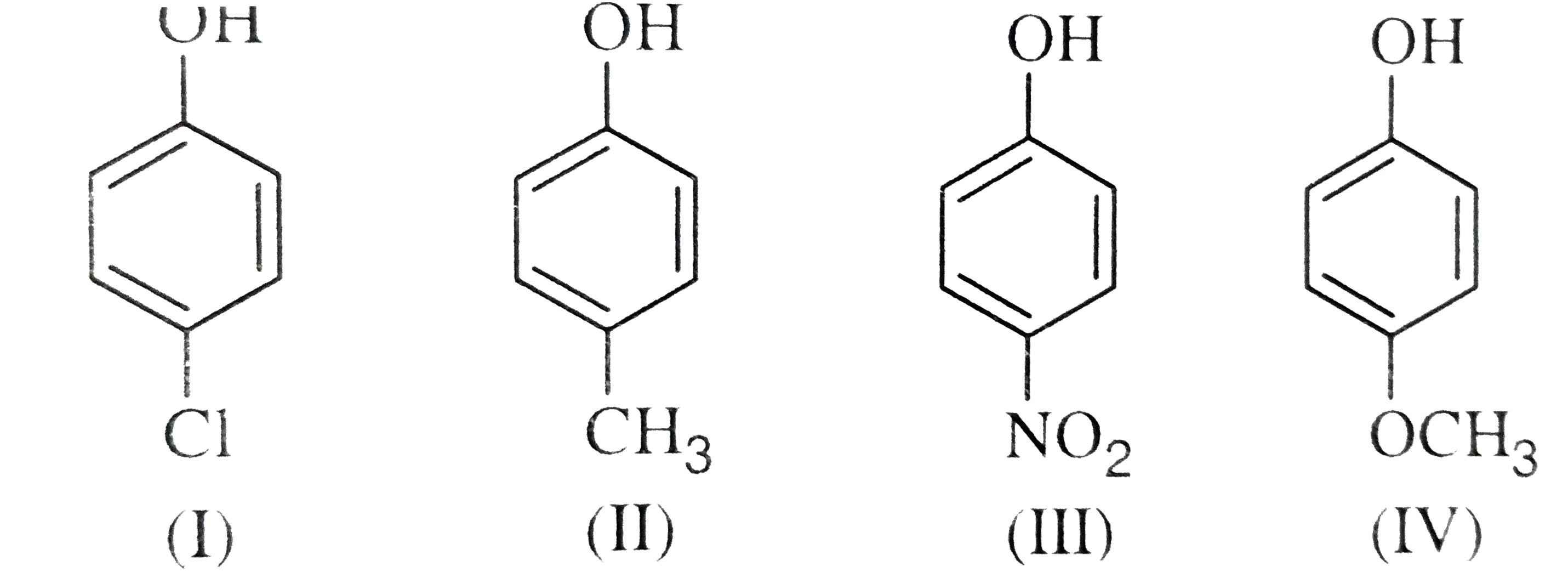Arrange the following compounds in the order of increasing conductance :LiCl,NaCl,KCl.
(a)LiCl>NaCl>KCl
(b)KCl>NaCl>LiCl
(c)NaCl>KCl>LiCl
(d)LiCl>KCl>NaCl
LiCl>NaCl>KCl
KCl>NaCl>LiCl
NaCl>KCl>LiCl
LiCl>KCl>NaCl
The correct Answer is:b
To solve the question of arranging the compounds LiCl, NaCl, and KCl in the order of increasing conductance, we need to consider the properties of the ions involved, particularly their sizes in the aqueous medium and how these sizes affect their mobility and conductance.
1. Understanding Conductance: Conductance of an ionic compound in solution depends on the mobility of its ions. The greater the mobility of the ions, the higher the conductance.
2. Ion Size in Aqueous Medium: In aqueous solutions, the size of the ions affects their mobility. Generally, smaller ions are more mobile than larger ions. The order of ionic sizes in the gaseous state is:
- K⁺ > Na⁺ > Li⁺
However, in the aqueous state, the trend reverses due to hydration effects.
3. Hydration and Effective Size: When ions are hydrated, the effective size (the size that affects mobility) changes. The lithium ion (Li⁺) has a high charge-to-size ratio, which means it is more strongly hydrated and has a smaller effective radius compared to sodium (Na⁺) and potassium (K⁺) ions.
4. Order of Ion Mobility: Based on the effective sizes in the aqueous medium:
- Li⁺ is the smallest and most mobile (highest conductance).
- Na⁺ is intermediate.
- K⁺ is the largest and least mobile (lowest conductance).
5. Conductance Order: Therefore, the order of conductance from lowest to highest is:
- KCl < NaCl < LiCl
6. Final Arrangement: The final arrangement of the compounds in order of increasing conductance is:
- KCl < NaCl < LiCl
Conclusion:
Thus, the correct answer is option (a) LiCl>NaCl>KCl.
- K⁺ > Na⁺ > Li⁺
However, in the aqueous state, the trend reverses due to hydration effects.
- Li⁺ is the smallest and most mobile (highest conductance).
- Na⁺ is intermediate.
- K⁺ is the largest and least mobile (lowest conductance).
- KCl < NaCl < LiCl
- KCl < NaCl < LiCl
Thus, the correct answer is option (a) LiCl>NaCl>KCl.
Topper's Solved these Questions
- ELECTROCHEMISTRYBOOK - CENGAGE CHEMISTRY ENGLISHCHAPTER - ELECTROCHEMISTRYEXERCISE - Archieves Fill In The Blanks
4 Videos
- ELECTROCHEMISTRYBOOK - CENGAGE CHEMISTRY ENGLISHCHAPTER - ELECTROCHEMISTRYEXERCISE - Archieves True/False
1 Videos
- ELECTROCHEMISTRYBOOK - CENGAGE CHEMISTRY ENGLISHCHAPTER - ELECTROCHEMISTRYEXERCISE - Archieves Multiple Correct Ansers
2 Videos
- D AND F BLOCK ELEMENTSBOOK - CENGAGE CHEMISTRY ENGLISHCHAPTER - D AND F BLOCK ELEMENTSEXERCISE - Archives Subjective
29 Videos
- GENERAL PRINCIPLES AND PROCESS OF ISOLATION OF ELEMENTSBOOK - CENGAGE CHEMISTRY ENGLISHCHAPTER - GENERAL PRINCIPLES AND PROCESS OF ISOLATION OF ELEMENTSEXERCISE - Archives (Subjective)
14 Videos
Similar Questions
Knowledge Check
Arrange the following compounds in order of their reactivity toward
 Ai<ii<iiiBi<iii<iiCii<i<IiiDii<iiil<i
Ai<ii<iiiBi<iii<iiCii<i<IiiDii<iiil<iArrange the following compounds in increasing order of acidity :
 AP>Q>R>SBS>Q>R>PCS>R>P>QDR>S>P>Q
AP>Q>R>SBS>Q>R>PCS>R>P>QDR>S>P>QArrange the following compounds in increasing order of basicity :
 AS>R>Q>PBS>R>P>QCP>Q>R>SDR>Q>P>S
AS>R>Q>PBS>R>P>QCP>Q>R>SDR>Q>P>S
Arrange the following amines in the order of increasing basicity :-
View SolutionArrange the following in the order of increasing entropy:
View SolutionArrange the following comounds in the increasing order densities.

View SolutionArrange the following compounds in decreasing order of acidity :

View SolutionArrange the following compounds in decreasing order of basicity :

View Solution

